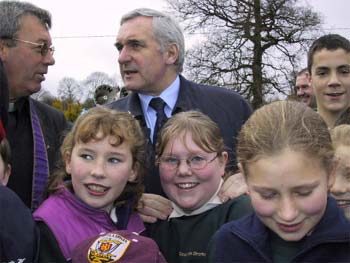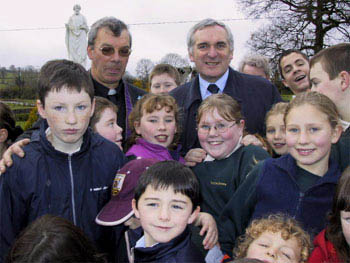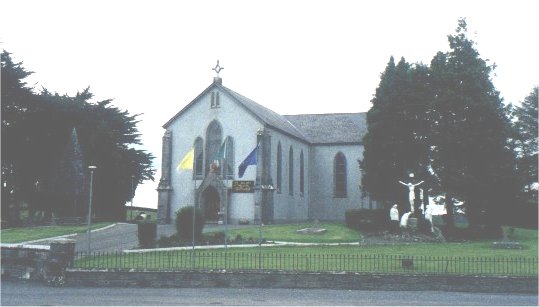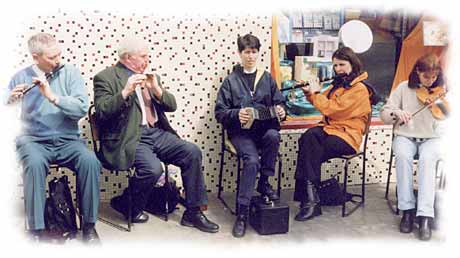|
|
|
|

|
of Ballinakill Millennium Amenity Park by An Taoiseach, Mr. Bertie Ahern T.D. on Friday 23rd November 2001. |
| Also, sincere thanks was expressed to the County Council, the National Millennium Committee, local County Councillors and FÁS Authorities, who helped in no small way to make the Project a great success. The Amenity Park is now a great asset to the Community as a focus of relaxation, culture and heritage. On Sunday 23rd June 2002 Ballinakill hosted 'A Lark in the Park' here. Families, neighbours and friends gathered together for a wonderful day of fun and entertainment. |

|

|
Ballinakill Church was built in 1845 on a plot of land (1 acre approx.) a
gift from the Burke Family of Marble Hill. It was built by Fr. Laurence Egan PP of
Ballinakill and Duniry at that time. It replaced the old church of Ballinakill
which is now used as a barn in Master Fahy’s yard. St. Joseph’s Church, Ballinakill is a Gothic Style Building and is enclosed by a wall, hedge and entrance gates. |


